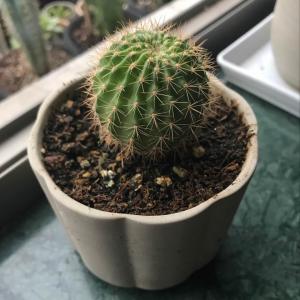文章
Dummer. ゛☀
2017年09月19日

Agave americana, commonly called the Century Plant, is a succulent desert plant native to Mexico. It can grow outdoors year-round in U.S. Department of Agriculture plant hardiness zones 8 to 10. The largest of the Agaves, mature plants range from 5 to 7 feet (1.5 to 2.1 m) tall with 8- to 12-foot (20 to 30 cm) spreads. Century Plant makes a dramatic accent plant with its blue or blue-gray leaves, black spines and showy, yellow-green flowers. Despite its renowned hardiness, Century Plant can still suffer from a few cultural, disease and pest problems.
Cultural Problems
Century Plant can tolerate various cultural conditions as long as it is planted in fast-draining soils. Poor-draining soils make the plant susceptible to the fungal pathogens that cause root rot. This Agave can survive down to 15 degrees Fahrenheit (-15 degrees Celsius), but the broad, fleshy leaves will suffer from freeze damage if the temperature drops below freezing for several hours. Freeze-damaged tissue turns black, dries out and looks unsightly. The damage can’t be repaired, but most Century Plants will recover. Prevent freeze damage by covering the plant with a light, cotton sheet when your area is expecting a freeze.
Diseases
Although Century Plant isn’t associated with any serious disease problems, root rot can be problematic in poor-draining or overly moist soils. Root rot causes wilting, stunted growth and discolored leaves. Unfortunately, this fungal infection cannot be treated once it occurs. Anthracnose is another occasional problem that occurs when fungal pathogens thrive in overly moist soil conditions. This disease causes lesions to form on the leaves, with red or orange spore masses developing inside the sores. Remove any anthracnose-infected plant tissue promptly to prevent the disease from spreading.
Pest Problems
For the most part, Century Plant doesn’t have serious pest problems, but there is one exception. Root rot typically goes hand-in-hand with agave snout weevil infestations. Adult females chew through to the base of the plant to lay their eggs in the infected plant tissue. The larvae hatch and burrow their way into the heart of the plant. Severely infected Century Plants look wrinkled or shriveled and emit a foul odor. The rotting plant tissue eventually collapses and the plant dies. Controlling Agave snout weevil is difficult, but spraying the base of the plant with a broad-spectrum insecticide in the spring often helps prevent infestations from occurring.
Recommendations
Avoid Century Plant problems by providing your plant with the best possible growing conditions. These succulents perform best when planted in fully sunny areas, although they can handle some light shade. Century Plant grows best in sandy or gritty soils with dry to medium moisture. These drought-tolerant plants only need occasional watering in dry summer weather to remain healthy. Give the plant plenty of room to grow and make sure it is planted away from foot traffic. The sharp spines can poke you and cause your skin to swell painfully.

Cultural Problems
Century Plant can tolerate various cultural conditions as long as it is planted in fast-draining soils. Poor-draining soils make the plant susceptible to the fungal pathogens that cause root rot. This Agave can survive down to 15 degrees Fahrenheit (-15 degrees Celsius), but the broad, fleshy leaves will suffer from freeze damage if the temperature drops below freezing for several hours. Freeze-damaged tissue turns black, dries out and looks unsightly. The damage can’t be repaired, but most Century Plants will recover. Prevent freeze damage by covering the plant with a light, cotton sheet when your area is expecting a freeze.

Diseases
Although Century Plant isn’t associated with any serious disease problems, root rot can be problematic in poor-draining or overly moist soils. Root rot causes wilting, stunted growth and discolored leaves. Unfortunately, this fungal infection cannot be treated once it occurs. Anthracnose is another occasional problem that occurs when fungal pathogens thrive in overly moist soil conditions. This disease causes lesions to form on the leaves, with red or orange spore masses developing inside the sores. Remove any anthracnose-infected plant tissue promptly to prevent the disease from spreading.

Pest Problems
For the most part, Century Plant doesn’t have serious pest problems, but there is one exception. Root rot typically goes hand-in-hand with agave snout weevil infestations. Adult females chew through to the base of the plant to lay their eggs in the infected plant tissue. The larvae hatch and burrow their way into the heart of the plant. Severely infected Century Plants look wrinkled or shriveled and emit a foul odor. The rotting plant tissue eventually collapses and the plant dies. Controlling Agave snout weevil is difficult, but spraying the base of the plant with a broad-spectrum insecticide in the spring often helps prevent infestations from occurring.

Recommendations
Avoid Century Plant problems by providing your plant with the best possible growing conditions. These succulents perform best when planted in fully sunny areas, although they can handle some light shade. Century Plant grows best in sandy or gritty soils with dry to medium moisture. These drought-tolerant plants only need occasional watering in dry summer weather to remain healthy. Give the plant plenty of room to grow and make sure it is planted away from foot traffic. The sharp spines can poke you and cause your skin to swell painfully.
0
0
文章
Dummer. ゛☀
2017年09月17日

Mealybugs are common pests of indoor plants. They can also be serious pests of outdoor plants in warmer climates, such as Florida and California.
Symptoms and Diagnosis
Adult females are oval, 1/5 to 1/3 inch long, and have a waxy, white, cottony appearance. They are slow moving and usually are in clusters along leaf veins, on the underside of leaves, and in hidden areas at joints. They are piercing-sucking insects, which feed on plant sap. The insects exude a honeydew, which can cause leaves to become sticky. Ants may be attracted to the sweet liquid. In time, a black mold, called sooty mold, can grow on the honeydew giving the leaves a dirty, sooty appearance. Plants infested with mealybugs become weak, may wilt and turn yellow, and eventually die.
Life Cycle
Indoors, eggs can be laid any time of year. Eggs hatch in about 2 weeks. The young mature in 6–8 weeks. Several generations can occur in the same year.
Integrated Pest Management Strategies
1. Remove insects. Dislodge as many insects as possible using a strong stream of water. A cotton swab soaked in rubbing alcohol will also effectively remove a few insects.
2. Use insecticidal soap. Insecticidal soaps specially formulated to kill insects and not damage plants are effective if used frequently until the problem is under control.
3. Use superior oil sprays. Highly refined oils sold as superior or horticultural oils are also very effective in controlling mealybugs. The oil suffocates the insects. Unlike dormant oils, these oils are highly refined and under proper conditions, can be applied to plants in foliage without damage. Follow label directions to avoid damage to some plants that may be sensitive. Superior oils are also considered nontoxic and are less likely to harm beneficial insects. When spraying indoors, protect surfaces that may be damaged by an oil residue.
4. Use chemical insecticides. Many insecticides registered for use indoors are available. Follow directions and, if possible, spray out-of-doors or in a garage, weather permitting.
5. To limit future problems, inspect plants regularly. With regular inspection, pest problems can be caught when just beginning and control is easier. It is also recommended to isolate newly acquired plants for 2–3 weeks to limit introducing pests indoors. Bringing plants indoors in the fall is another way of introducing insects indoors.

Symptoms and Diagnosis
Adult females are oval, 1/5 to 1/3 inch long, and have a waxy, white, cottony appearance. They are slow moving and usually are in clusters along leaf veins, on the underside of leaves, and in hidden areas at joints. They are piercing-sucking insects, which feed on plant sap. The insects exude a honeydew, which can cause leaves to become sticky. Ants may be attracted to the sweet liquid. In time, a black mold, called sooty mold, can grow on the honeydew giving the leaves a dirty, sooty appearance. Plants infested with mealybugs become weak, may wilt and turn yellow, and eventually die.

Life Cycle
Indoors, eggs can be laid any time of year. Eggs hatch in about 2 weeks. The young mature in 6–8 weeks. Several generations can occur in the same year.
Integrated Pest Management Strategies
1. Remove insects. Dislodge as many insects as possible using a strong stream of water. A cotton swab soaked in rubbing alcohol will also effectively remove a few insects.
2. Use insecticidal soap. Insecticidal soaps specially formulated to kill insects and not damage plants are effective if used frequently until the problem is under control.

3. Use superior oil sprays. Highly refined oils sold as superior or horticultural oils are also very effective in controlling mealybugs. The oil suffocates the insects. Unlike dormant oils, these oils are highly refined and under proper conditions, can be applied to plants in foliage without damage. Follow label directions to avoid damage to some plants that may be sensitive. Superior oils are also considered nontoxic and are less likely to harm beneficial insects. When spraying indoors, protect surfaces that may be damaged by an oil residue.
4. Use chemical insecticides. Many insecticides registered for use indoors are available. Follow directions and, if possible, spray out-of-doors or in a garage, weather permitting.

5. To limit future problems, inspect plants regularly. With regular inspection, pest problems can be caught when just beginning and control is easier. It is also recommended to isolate newly acquired plants for 2–3 weeks to limit introducing pests indoors. Bringing plants indoors in the fall is another way of introducing insects indoors.
0
0



















